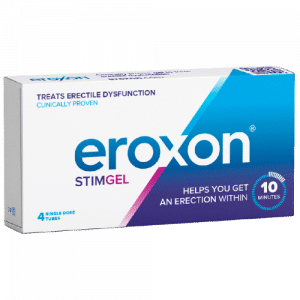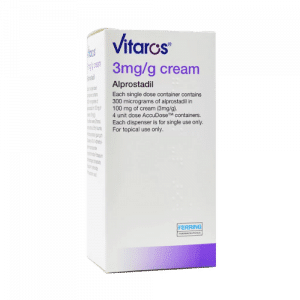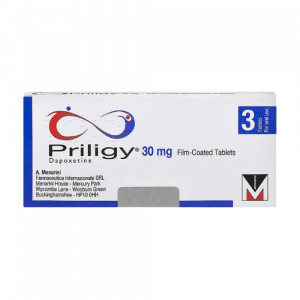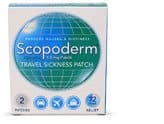
Scopoderm Travel Sickness Patches: An advanced solution for preventing and managing motion sickness symptoms. Each patch, containing 1.5mg of hyoscine hydrobromide, is designed to be worn behind the ear, delivering continuous relief from nausea and vomiting associated with travel for up to 3 days. Scopoderm works by blocking the confusing signals sent to your brain that cause motion sickness. Ideal for travelers seeking a convenient and effective remedy. Remember to apply one patch 5-6 hours before your journey begins for optimal results.
Scopoderm Patches hyoscine
Product Information
About Scopoderm Patches hyoscine
Scopoderm travel sickness patches contain a substance called hyoscine hydrobromide, which is one of the most widely used medications to treat travel sickness.
Hyoscine is absorbed through your skin via the self-adhesive Scopoderm patch. Each patch contains 1.5mg of hyoscine and can be kept on for up to 3 days. Only 1 patch should be used at a time and it must be removed after 3 days and replaced if ongoing treatment is required.
What does it do?
The hyoscine works by reducing the conflict in your brain, which can happen while travelling. You begin to feel travel sick when there is a conflict between what your inner ear vestibular balance mechanism can sense and what your eyes can see.
Hyoscine blocks receptors called muscarinic (or cholinergic) in the vomiting centre from receiving messages from the vestibular system. This prevents internal confusion, which causes the feeling of nausea.
How to use Scopoderm patches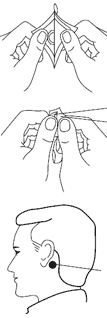
This medicine works best before you start to feel ill, so it’s recommended that you put on a patch 5 to 6 hours before travel. However, you can also use the patch during travel to help reduce nausea.
To ensure that you put on the patch correctly, follow these steps:
- Remove the patch from its seal and peel off the clear, hexagonal plastic backing. Hold the patch by its edge and be careful to avoid touching the sticky side.
- To put the patch on, find a dry, hairless area of skin behind your ear and press the silver-coloured sticky side in place. Hold the patch there and count slowly to ten.
- Next, wash your hands thoroughly.
- When you remove the patch, wash your hands thoroughly afterwards, as well as wash the area of skin where the patch has been.
If the patch comes off accidentally during your journey, throw away the patch, wash the area, as advised above, and put a new patch on behind the other ear.
Each patch lasts for up to 3 days (72 hours). You can use Scopoderm patches for longer journeys – just take the patch off after 3 days and put a new one behind the other ear.
Cautions when using Scopoderm patches
It’s important to always wash your hands after applying or removing a Scopoderm patch. You should also try to avoid touching the patch whilst it’s on. This is because, if you touch your eyes with hyoscine on your fingers, the substance can temporarily blur your vision.
Do not drink alcohol or take other anti-sickness medicines whilst using Scopoderm patches.
Provided that you have applied the patch properly, you can swim, bathe or shower with little risk of it coming off. However, it is best not to stay in the water too long.
Do not cut the patches in an attempt to reduce the dosage. This may release a much larger dose in a short period and increase the risk of severe side effects.
Elderly people may be more likely to develop side effects, especially if they have reduced kidney or liver function.
Side effects of Scopoderm patches
As with any medicine, there are potential side effects. The most commonly reported side effect is a dryness of the mouth, although this does not last long.
If you experience a dry mouth as a side effect of this medicine you may find that medicines designed to dissolve and be absorbed from the tongue, e.g. Maxalt melts for migraine do not dissolve properly in a dry mouth. To resolve this, drink a mouthful of water before taking melt-in-the-mouth tablets.
Rare but potentially serious side effects
If you experience any of the following, remove the Scopoderm patch immediately and consult a doctor urgently:
- Hyperthermia (overheating).
- Inability to pass urine.
- Confusion, disorientation, less conscious or aware of surroundings.
- Hallucinations – seeing or hearing things that are not there.
- Fits.
- Breathing difficulties.
These are more likely in children and the elderly when Scopoderm patches are being used for long periods and if they are being used for symptoms other than travel sickness.
Other possible side effects
- Sleepiness.
- Dizziness.
- Blurred vision or other visual disturbance.
- Redness, itching, or irritation of the skin where a patch has been.
- Changes in the size of pupils.
- Decreased sweating.
If any of these effects are severe, or if you experience any other side effects, take the patch off and consult a doctor. Also seek medical assistance if any side effect lasts for over 24 hours, after removing the patch. However, it is rare for the symptoms to persist this long.
Due to the potential side effect of drowsiness, you must not drive or operate machinery whilst wearing a Scopoderm patch.
When not to use Scopoderm Patches hyoscine
During a Dr Fox online consultation, we will determine whether Scopoderm patches are suitable for you. However, check with your GP before using Scopoderm patches if:
- You suffer from any serious gastrointestinal, kidney disease, liver disease, or heart disease.
- You suffer from epilepsy.
- You are pregnant or breastfeeding.
- If you have ever had glaucoma.
- Have a history of bladder, prostate problems, pyloric, or bowel obstruction.
- If you’ve had a bad reaction to hyoscine, or other anti-sickness medication in the past.
- Have ulcerative colitis.
- Have diarrhoea or fever.
- Have Down’s Syndrome.
- Have myasthenia gravis.
Do not use Scopoderm patches if you have a high temperature/fever. If you develop a high temperature/fever whilst using a Scopoderm patch, remove the patch and take measures to reduce the fever.
If you are aged over 60 and are not fit and well, you may be more likely to experience dizziness with Scopoderm. Remove the patch and stop using Scopoderm if this happens.
Scopoderm patches should not be used by children less than 10 years old. Dr Fox does not supply medication to under 18s.
Other medications which interact with Scopoderm
If you are taking some other medicines, you may still be able to use Scopoderm, but there are some medication interactions with Scopoderm. Please check and consult your regular doctor if advised.
Additional Information
See Dr Fox’s travel sickness page and the NHS website on travel sickness.
Related Products
-
Erectile dysfunction medication
Eroxon ED Treatment Gel – 4 Pack
Rated 0 out of 5£25.00 Add to basket -
-
-

